Weeeeehhhhheeeeeellll, maybe you
HAVE heard of
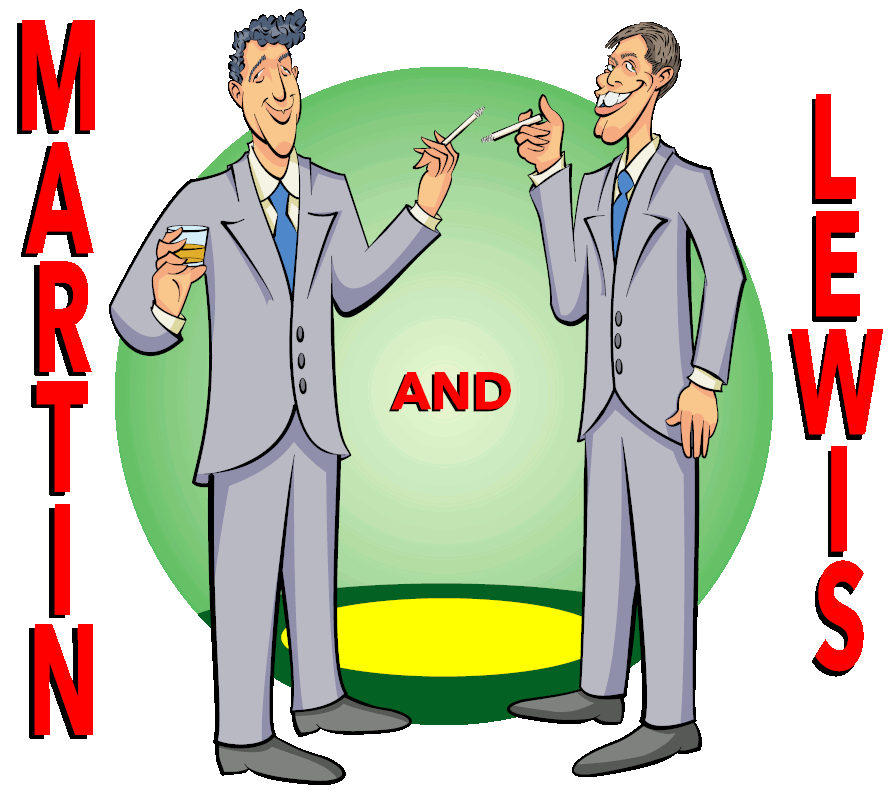
Unlike some of the great comic duos - Laurel and Hardy, Abbott and Costello, and the once classic but now forgotten Lum and Abner - Dean Martin and Jerry Lewis faired much better in their later independent careers than when they appeared in tandem. But in the mid-1940's to the mid-1950's Martin and Lewis was the biggest comedy act around.1
Footnote
The definition of what constitutes a comedy duo or team is somewhat vague. Not all - quote - "comedy duos" - unquote - deliver stand-up routines or even exist in reality. For instance, Laverne and Shirley have been cited as a comic duo but they were a fictional pair created for the sitcom Laverne and Shirley. The actual actors were Penny Marshall and Cindy Williams.
Of course there were the great husband and wife teams of George Burns and Gracie Allen as well as Jack Benny and Mary Livingstone. But eventually both Gracie and Mary decided to retire from acting and Jack and George continued to even greater and iconic comedic heights.
Great Comedy Duos like ...
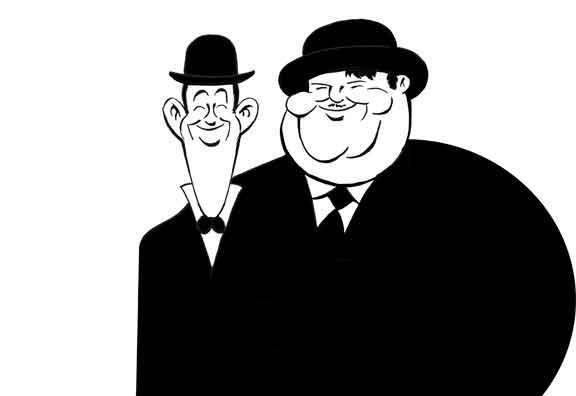
Stan and Oliver
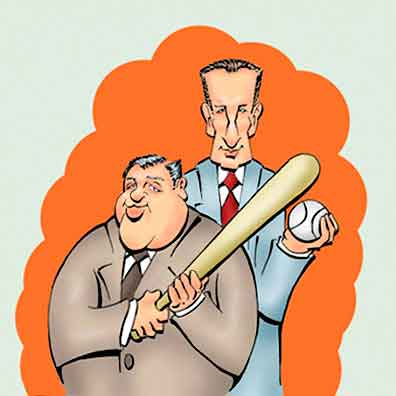
Bud and Lou
It's not well known but young easy-going Dino Crocetti's first real job was as a boxer. Dean was born in Steubenville, Ohio, and in the tenth grade he told his dad that he wanted to quit school and go to work. When his dad asked if he thought he knew more than his teachers, Dino said yes. Besides he wanted to make money. Later Dean was asked if dropping out was the right thing to do. He said absolutely.2
Footnote
Dean did clarify his comments and said he was not telling kids to quit school. What he meant was for him and at that time it was the right thing to do.
After a few short term jobs (including milkman's assistant and pumping gas at a service station) he was taken under the wing by a local fight manager. As an amateur welterweight Dino won 24 out of 30 fights before turning semi-pro at $10 a fight. His boxing career continued until one night he was punched so hard his nose was flattened and he decided the fight game wasn't for him.
After a couple of more occupations (including transporting bootleg whiskey) Dino got a job as a croupier in a gambling house. His mother wanted him to quit because she didn't want her son to be a gambler. But Dino pointed out that as a stickman, he wasn't gambling. Well, his mom said, then that's all right.
Dino began making good money - over $100 a week at the height of the Great Depression. He helped his dad pay off their mortgage and send his older brother Bill to college.
Of course, all was not work and Dino and his friends liked to take a night off from hauling whiskey around Ohio's backroads. They would often repair to "roadhouses" which according to the dictionary are establishments where there was food, dancing, and gambling. His friends knew Dino had a good singing voice - even though he couldn't read music and had to learn everything by ear - and they would have him take to the floor and sing some songs accompanied by whatever combo was present. Dino said he and the others of his generation - including his friend Frank Sinatra - learned to sing by listening to Bing Crosby.
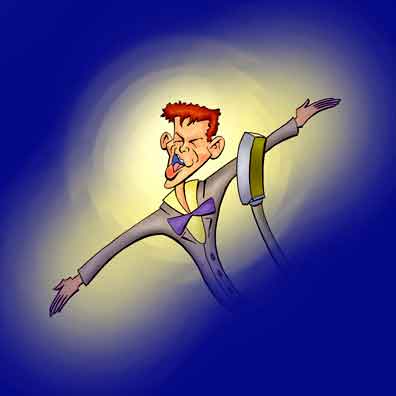
Frankie ...
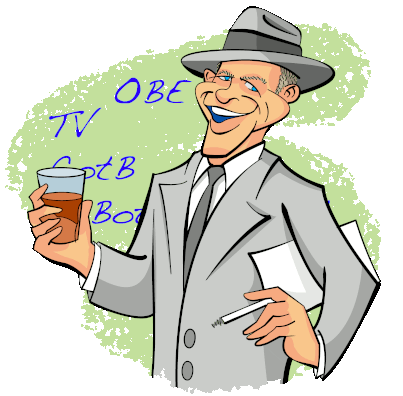
... and Frank
Inspired by Bing
Dino was particularly popular at Reed's Mill and Walker's Nightclub in Columbus, Ohio. Then after one performance the band's leader, Ernie McKay, offered him a job. Although the $40 - $50 a week would mean a cut in salary, with strong persuasion from his friends, Dino became a full time performer.
Personnel turnover in the big bands was pretty high - sometimes the leader would recruit new musicians for each tour. By 1940, Dino - who was being billed as Dino Martin (or Martini) - took a job with the Sammy Watkins Orchestra. Sammy was a pretty big name and Dino became Dean Martin. As Sammy's male vocalist, Dean ended up with a write up in Variety magazine. Then in 1942 Sammy and his band became the house band for NBC's "Fitch Bandwagon", a radio program broadcasting out of Cleveland. With all respect to the good people in Cleveland, it wasn't the big time and the band soon relocated to New York City. Dean was a star.
About that time a young comedian from New Jersey named Joseph3 Levitch was appearing in clubs in New York. Although he was ten years Dean's junior, he had begun performing professionally even before Dean joined Sammy's band. Young Joseph's parents had been performers in the Catskills resorts and his mom used the stage name Rae Lewis. So when Joseph Levitch began to perform he did so as Jerry Lewis.
Footnote
That Jerry's real name was Joseph was stated by Jerry himself in his autobiography. However, a later author uncovered a birth record that gave Jerry's first name as Jerome.
During the school year Jerry lived with his grandmother while his parents were on the road. For summers he joined them on their tours. But ultimately as did Dean, Jerry dropped out of school and also in the 10th grade. By the early 1940's Jerry was performing stand-up comedy and his speciality was miming records with wild gestures and a rubber-like visage.4
Footnote
Jerry continued miming to records even after he went into movies and television. There are video clips where he performed his "opera" act. Then in movies like The Errand Boy and Cinderfeller there are scenes where Jerry mimes or acts to swing tunes performed by none other than Count Basie.
But all was not what it seems. Although Jerry had a goofy and innocent stage persona, he was serious about his work. He was a bonafide workaholic and when things didn't go right, his formidable temper could come to the forefront.
Also unlike Dean, who preferred to work only with his manager, Jerry said he wasn't happy unless he had 30 or 40 in his retinue. Jerry traveling with a crowd was satirized in the 1958 film The Bellboy where the story has Jerry Lewis showing up with his massive entourage at the Fontainebleau Hotel in Miami where bellboy Stanley (also played by Jerry) wreaks havoc.
It wasn't long after Dean arrived in the Big Apple that he met Jerry. They encountered each other on the street and were introduced by a mutual friend. They shook hands, exchanged a few words, and went on their way with neither being favorably impressed by the other.
But this was the Golden Age of the East Coast Nightclub. Electronic music that is now spun by the house disc jockey had not had yet replaced live bands. Usually there were a number of acts scheduled for the evening and performers would meet and mix backstage. It was inevitable that Dean and Jerry would appear at the same club.
They first appeared on the same show at the Glass Hat Club and the date given varies from 1944 to 1946. However, they didn't perform together. Dean sang and later Jerry came out and did his record miming act. Then on March 16, 1946 at the Havana-Madrid nightspot they had their separate acts but after the show they got together and entertained the audience with an impromptu act that attracted the attention of Billboard Magazine. Jerry suggested they put together an act but Dean felt he was doing OK on his own.
The actual details of how Martin and Lewis became Martin and Lewis vary with the source. One story - as told in a comic book - is that the owner of Atlantic City's 500 Club found himself an act short. Jerry was appearing on the bill and suggested his friend Dean Martin. But the owner said he didn't want a singer, he needed a comedy act. Fine, said Jerry, they'd do a duo act where Dean would be the straight man.
However, another scholar delved into the story and found things weren't quite so simple. Instead Jerry's agent, Abner "Abbey" Greshler, was able to book Jerry at the 500 Club although the front man, Irving Wolf, hadn't yet seen the act. Irving took Abbey's word that Jerry would be a hit. The club's actual owner, Paul "Skinny" D'Amato, said OK even though he hadn't seen Jerry's act either.
And Jerry fell absolutely flat. It seems that seeing a skinny kid gyrating on a stage while making goofy faces and pretending to sing grand opera didn't appeal to the patrons. People in the audience began walking out and Jerry was canceled after the first show. Naturally Skinny voiced his displeasure to both Irving and Abbey.
Jerry was in a fix. He had already advanced the hotel a week's rent. And is wife, Patti, was sick and he needed the money.
Normally Jerry would ask Abbey to smooth things over. But Jerry had bombed so bad that Abbey himself was persona non grata at the club. Skinny even said that if Abbey showed up he'd end up in the East River enveloped in a concrete overcoat.
So Jerry called another agent, Lou Perry, and said he needed to keep playing at the 500 Club. Lou said he'd try to think of something. Lou, who just happened to be Dean's agent, then came up with an idea that just might work.
Skinny and Irving had been trying to get Dean to appear at the 500. But by then Dean's fees were higher than either wanted to pay. So Lou told them that Dean would sing for $500 a week - a considerable discount - but they also had to keep Jerry as part of the show. And no, Jerry wouldn't do his corny record miming. Dean would sing but would also act as a straight man to Jerry's clowning. Irving said he'd give them a try.
Dean and Jerry first appeared as one act at the club on July 25, 1946. They last performed as a comedy duo at the Copacabana in New York on July 25, 1956, ten years to the day that they first teamed up.
In the intervening decade they made 17 motion pictures, hosted their own television show, and appeared on numerous variety programs and in nightclubs and live theaters. There were even Martin and Lewis comic books for crying out loud!
But as often the case for professional associations, things did not always go smoothly. Certainly there were differences in the personalities of the workaholic Lewis and the laidback Martin and there were reports of personal friction amongst other family members. Also it was clear the film scripts were being written as a venue for Jerry's comedic talents and regardless of the dual billing it was clear Dean was being relegated to the "also starring" role.
By the mid-50's there were rumblings that the Martin and Lewis act was strained to the breaking point. But whatever the underlying causes as voiced by scholars and historians, it was the film The Delicate Delinquent that was the spark that finally brought down the house that Dean and Jerry built.
Jerry was to play a young janitor named Sidney Pythias unjustly accused of being part of a street gang. Dean was to play the part of a police officer named Mike Damon (yes, the main characters were Damon and Pythias) who took Sidney under his wing. Ultimately Sidney becomes a rookie cop, and despite the expected intervening buffoonery and another false accusation that threatens to derail Sidney's career, things turn out all right.
Dean had been given an outline of the movie and he seemed OK with it. But when he was handed the actual script he saw he was playing an ordinary patrolman not a character like a sophisticated detective. He exploded.
"You mean, I’m gonna play a cop in uniform?" he demanded.
"That’s it," said Jerry. "A cop."
"I don’t want to play a cop," Dean retorted.
"Then we'll have to get somebody else," said Jerry airily.
"Start looking, boy!" Dean said, and walked out.
So Darren McGavin - from the old Mike Hammer television series and best known today as the potty mouthed father in The Christmas Story - took Dean's place.
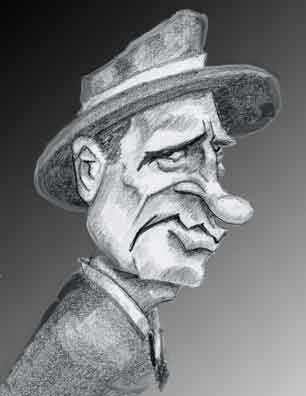
Darren McGavin
(Mike Hammer)
He took Dean's place.
The Delicate Delinquent was a hit and pretty much confirmed that people had been going to Martin and Lewis movies to see Lewis and not Martin. Bringing in $4 million world wide at a cost of only $500,000, the picture recouped its budget by 800%.
So the studios quickly found they liked Jerry's movies. They were low budget and high return and the next movie, The Sad Sack, only cost $200,000 and still took in the expected 3 to 4 million.
As the Fabulous Fifties merged into the Swinging Sixties, Jerry was one of Hollywood's biggest stars. It was 1963 that saw The Nutty Professor which is often considered as the quintessential Jerry Lewis film. With a plot borrowed from Dr. Jekyll and Mr. Hyde, Jerry plays the part of (yes) a nutty professor who invents a formula that transforms the nerdish bucked-toothed Julius Kelp into a suave crooner named Buddy Love. Of course, by the end of the movie Julius realizes that its better to be who you really are rather than someone you wish to be.
Although the film was a hit - taking in almost $20 million - some critics took exception to the characters since they saw Buddy Love as a rather unkind satire of Dean Martin. Jerry, though, denied Dean was the model for Buddy Love or that there had been any malicious intent.
A surprise to many Americans is that if Jerry was a star in the United States, he became iconic in France. Yes, France. And not just as a comedian but as a true cinematographic artist. French director Jean-Luc Godard said, "Jerry Lewis is the only American director who has made progressive films." The French critic Robert Benayoun wrote a biography Bonjour Monsieur Lewis although it has never been translated into English. Robert went even further than Jean-Luc saying,"I consider Jerry Lewis, since the death of Buster Keaton, to be the foremost artist of the time." In 2006, Jerry was awarded the Légion d'honneur, the highest award bestowed by the French government.
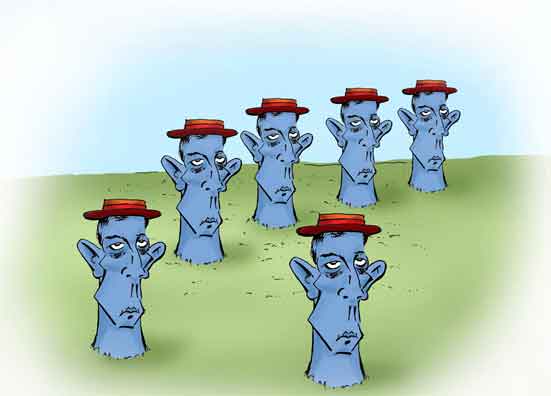
The Foremost Artist Before Jerry?
Jerry didn't just star in his movies, but also served as writer, director, and producer. Despite making the pictures as independent productions - not a common procedure at the time - he had no problem getting the major studios like Paramount, Warner Brothers, Columbia, and Twentieth Century Fox to handle the distribution.
By the time Which Way to the Front was released in 1970, Jerry had starred in over 20 movies since The Delicate Delinquent and had guest or cameo appearances in a number of others. In Which Way to the Front Jerry plays an American who impersonates a German general in order to help the Allies in their fight on the Italian front. The film boasted a supporting cast of the top notch comedians Jan Murray, Joe Besser, and Paul Winchell.
But as a future Nobel laureate warned, the times were a-changing. And so was American humor. Which Way to the Front was a disaster. It was panned by the critics and flopped at the box office. Jerry didn't make another movie for eight years.
When he did return to the big screen in 1980 with Hardly Working, the turnout was good but mostly it seems this was the kids of the 50's and 60's were now adults hoping for a bit of nostalgic comfort by seeing a childhood hero back on the screen. So the movie was a commercial success, yes, but unfortunately it was once more a critical failure.
In fact most of Jerry's later movies were received rather tepidly by the critics and the public alike. The criticism was the movies tended to be the same old routines where the main character spent the whole movie in bumbling escapades where he falls down, knocks things over, makes funny faces, speaks in a squeaky and whining voice, and causes unintentional havoc. Other appearances tended to be in secondary roles and cameos in films written and produced by others.
However, three years later in 1983 Jerry was cast in The King of Comedy. But the King of Comedy was not Jerry. Instead it was Robert de Niro who played the role of Rupert Pupkin, a horribly unfunny comedian with mental problems who was trying to get on the country's top talk show. Jerry, in a rare non-comedic role, played the part of the host who was obviously modeled after Johnny Carson. Ironically the picture, including Jerry's performance, garnered good reviews and won the London Film Critics' Circle Award as Best Film of the Year. Unfortunately, the picture failed at the box office.
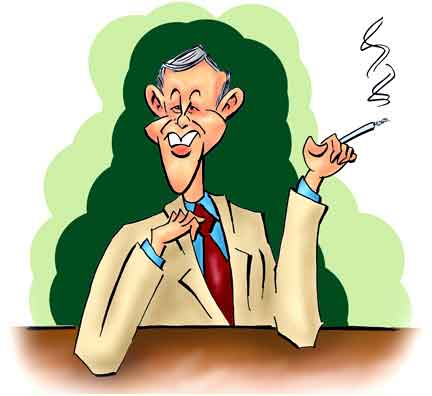
Johnny Carson
The Obvious Model
With his movies not faring particularly well, other activities were beginning to take precedence. From the mid-20th century Jerry began hosting the telethons to raise money for research and treatment of muscular dystrophy. He began assuming the role as presenter in 1952 and hosted the yearly Labor Day Telethon from 1966 until 2010. A single telethon could raise over a million dollars in the days when a million dollars was a lot of money.
In interviews and on some talk shows, Jerry could come off, not as a comedian, but as a rather testy personality with little patience for disagreement. Once on a famous talk show - not The Tonight Show with Johnny Carson but that of another host - one of the audience complained that the tone of the telethons were mawkishishly sentimental to the point of nausea. Jerry paused and then implied that the person might prefer to decorate their home with an autographed portrait of the girlfriend of the grandson of Maria Schicklgruber. The host did call Jerry to task for suggesting someone must be a follower of the younger Schicklegruber's philosophy simply because they had a different opinion than his.
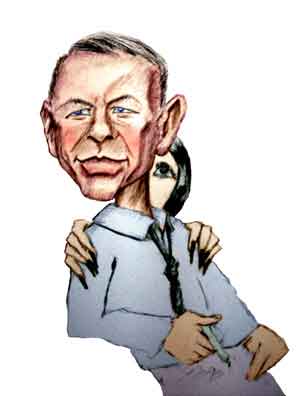
Frank
Leader of the (Rat) Pack
Of course, during all this time Dean's career did not falter. He became part of Frank Sinatra's famed "Rat Pack" and ended up with 28 tunes charting on the Billboard Hot 100. In 1953 That's Amore reached #2 and on August 15, 1964 Everybody Loves Somebody Sometime topped at #1. That a singer pushing toward his 50's would have a #1 tune on the Top of the Pops is all the more amazing as this was the time that the English Invasion was well underway. Even more incredible is Dean's song took over the top spot from a song called A Hard Day's Night as sung by a quartet of young Albions.
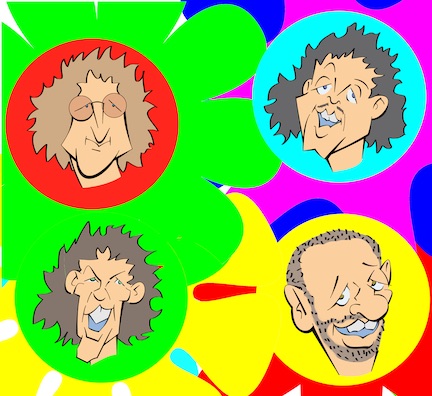
The Albion Quartet
Of course, Dean also stuck with motion pictures. An early and serious movie (and one of Dean's best) was The Young Lions, a World War II film which co-starred Montgomery Clift and Marlon Brando.
Surprisingly for a man considered the epitome of the high living urban sophisticate, Dean found a surprising métier in Westerns: Texas Across the River, Bandolero!, Rio Bravo, Showdown, 5 Card Stud, and The Sons of Katie Elder (with John Wayne). But he retained his talent for comedy and he appeared in Ocean's 11, Four for Texas, and Robin and the Seven Hoods. Dean also assumed the helm - no pun intended - in a series of pictures about Matt Helm, the protagonist of the novels of Donald Hamilton, with Matt intending to be America's answer to James Bond.
Dean fared particularly well on television. The Dean Martin Variety Show lasted nine seasons - an extraordinary run for a show premiering in the 60's. This was followed by a decade of the Dean Martin Celebrity Roast starting in 1974, a program which fit the humor of the times (then and now) where trashing people was considered the height of wit. Dean also lent his name to Dean Martin Presents the Golddiggers, the summer replacement for The Dean Martin Show and which was hosted by Joey Heatherton and Frank Sinatra - that's Frank Sinatra JUNIOR.
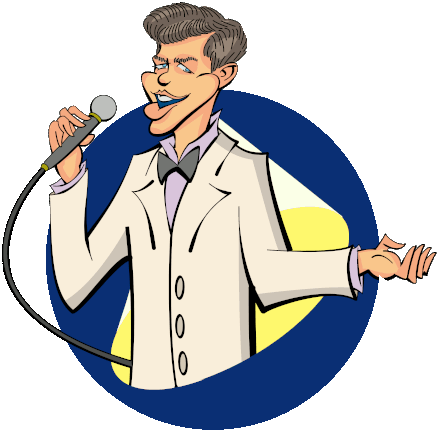
Frank Junior
Guest Host
Throughout his career Dean cultivated the image of the bibulous, boozy bacchanal. But the amount Dean really drank is a matter of some debate. His wife and daughter have said he liked a drink or two after work but the boozer image was just part of his act. The omnipresent glass of booze he carried on stage was filled with apple juice.
On the other hand there were stories that in his later years Dean's drinking got out of hand which taken with his life-long chain smoking produced health problems that curtailed his activity. Dean died of lung cancer on Christmas Day, 1995.
Jerry, too, was a heavy smoker and later in life he developed associated health problems. He also suffered from chronic pain which has been attributed to his taking numerous tumbles and falls in his acts and produced a dependence on pain killers. Despite his health issues Jerry continued to perform into his eighties and his last movie was Max Rose, a drama about an aging jazz pianist. It was filmed in 2013 and officially released in 2016. Jerry lived another year, dying August 20, 2017, age 91.
References and Further Reading
Everybody Loves Somebody Sometime (Especially Himself): The Story of Dean Martin and Jerry Lewis, Arthur Marx, Hawthorne Books, 1974.
Jerry Lewis in Person, Jerry Lewis with Herb Gluck, Atheneum, 1982.
Memories Are Made of This: Dean Martin Through His Daughter's Eyes, Deana Martin (Foreword by Jerry Lewis), Crown, 2005.
That's Amore, Ricci Martin with Christopher Smith, Taylor Trade Publishing, 2002.
"How Dino Crocetti of Steubenville became pop singer Dean Martin", Dave Tabler, June 25, 2019, Appalachian Celebrities, Appalachian History.
King of Comedy: The Life and Art of Jerry Lewis, Shawn Levy, St, Martins Press, 1996.
What’s So Funny About Jerry Lewis?", Rolling Stone, Lynn Hirschberg, October 28, 1982.
"Jerry Lewis Clowns his Way to Legion of Honour", CNN Entertainment, March 16, 2006.
"Follow Up Reviews", Billboard Magazine, March 15, 1946, p. 45.
"New York Sound Track", Variety Magazine, September 3, 1958, p. 4.
Return to Martin and Lewis Caricature